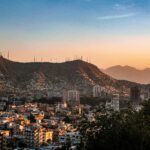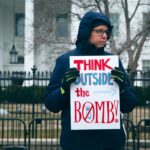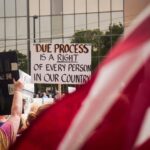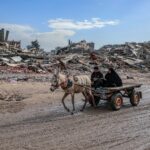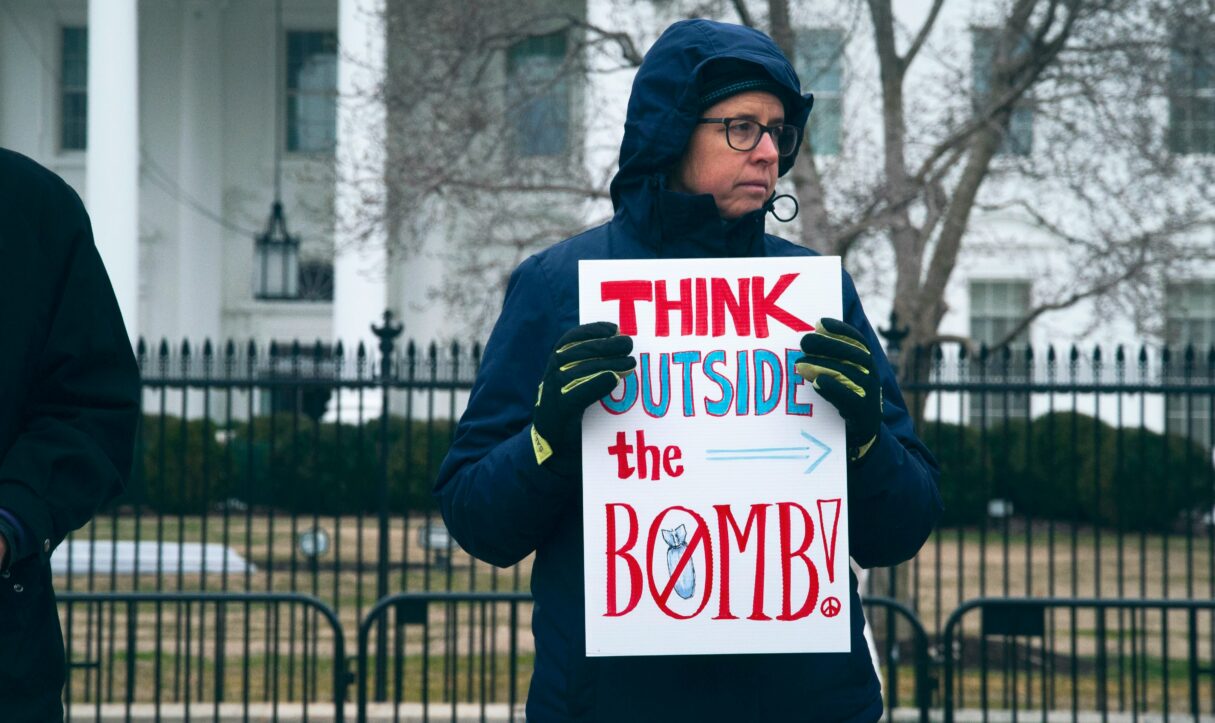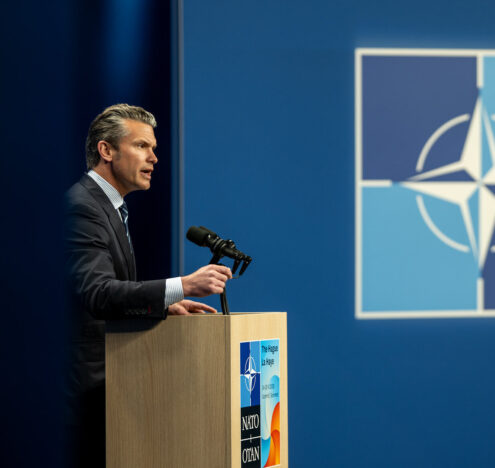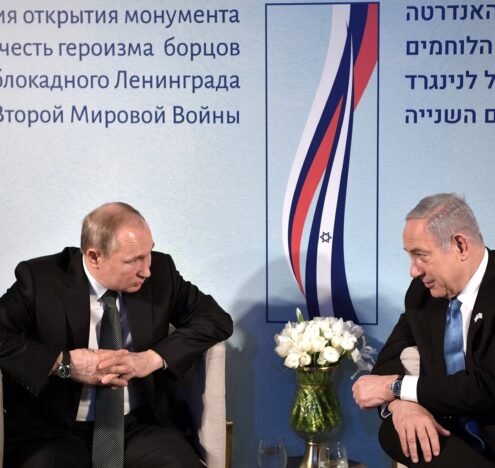Advocates of reversing the nuclear arms race and ultimately abolishing these potentially world-ending weapons have rallied around the 80th anniversaries of the Trinity test, which occurred earlier this month, and the bombing of Hiroshima, which will reach the same milestone on Aug. 6. Yet, advocates for reducing and eliminating nuclear weapons are up against it. Funding for work is down, while well-funded pro-nuclear ideologues are on the march, supporting the Pentagon’s proposed $1 trillion nuclear spending binge for the next decade while calling for more — multiple warheads on land-based missiles, billions in new money for nuclear warhead development, and, for some, a resumption of above ground nuclear testing.
All of this comes in the context of an authoritarian regime that is undermining the rule of law on a daily basis, using the military to advance its goal of mass deportations, cracking down on universities that it deems insufficiently harsh on students opposed to Israel’s campaign of mass slaughter in Gaza, seeking to dismantle public sector unions, cutting spending on civilian science, and treating terms like diversity, equity, inclusion and “climate” as if they were dirty words. Add to that a big ugly bill that will make steep cuts in basic benefits like Medicaid and food assistance while making room for a $1 trillion Pentagon budget and multi-trillion dollar tax cuts, and it’s hard to blame the average American for feeling overwhelmed and powerless in the face of this multi-pronged assault on our lives and livelihoods.
In this environment, getting people to take up the issue of nuclear weapons, as crucial as it is, is a daunting task.
The way forward must come from the leadership of communities that have borne the brunt of nuclear weapons development, testing, and use, and are brave enough to tell their stories. I had a chance to hear some of these stories at a recent DC gathering co-convened by the Arms Control Association and the Win Without War Education Fund, entitled “From Trinity to Today: Nuclear Weapons and the Way Forward.”
Mary Dickson, an author and downwinder who has suffered the health effects of nuclear radiation and seen family and colleagues die from exposure, put it best when she said that — given the widespread, devastating health effects of nuclear weapons development and deployment, past, present, and future — “we are all downwinders,” adding that “war does not have to be declared to harm people.”
Dickson spoke of the 928 nuclear weapons tests conducted at the Nevada Test Site – 100 of them aboveground — and how they literally rained radiation down on communities in Utah and beyond. At the height of the tests, children played with radioactive snow, and even put sugar in it and ate it, with no idea of how toxic it was or what it would do to them down the road. Dickson noted that the US government knew of the health risks from radiation for years but chose to lie and cover it up rather than deal with the problem.
Dickson’s story parallels the experiences of downwinders in New Mexico, who were not present at the conference, but who have suffered generations of cancer and other negative health effects from the legacy of the Trinity test, conducted in their home state 80 years ago, on July 16,1945.
The fight for compensation for victims of the New Mexico tests, spearheaded by Tina Cordova and the Tularosa Basin Downwinders, is powerfully portrayed in Lois Lipman’s documentary, First We Bombed New Mexico. As Cordova has explained, the way of life in the communities downwind from the Trinity test made them especially vulnerable.
“All of that was contaminated as the ash fell from the sky.”
“We didn’t have running water; we didn’t have a grocery store, because people didn’t have refrigeration,” she said. “As far as food is concerned, they ate the food they grew from orchards and gardens. It was July, so they would have been at the height of their growing season. They also raised all of the animals that they ate. If they didn’t have animals available, they hunted birds, small mammals, deer, rabbits, and quail. It was also very common to have a milk cow or a goat. All of that was contaminated as the ash fell from the sky.”
The source of water for people came from water–collecting cisterns. A cistern is normally an underground pit that was dug into the ground and then oftentimes plastered. During the rainy monsoon season, which we would have been in, water would be collected from people’s roofs and channeled into the systems. The ash that fell from the sky and then got to these roofs would then have been collected into a cistern. That contaminated water was then used for every purpose: drinking, bathing, cooking, cleaning, doing laundry.”
The otherwise dismal “Big Beautiful Bill” that legislators signed into law earlier this month contained one positive provision — a renewal of the Radiation Exposure Compensation Act (RECA) that included New Mexico and other areas that a previous version of the bill had excluded. RECA advocates came from both parties, including Republican US Senator Josh Hawley, whose constituents in St. Louis have endured exposure to radiation stored there from the time of the Manhattan Project. The provision is not perfect, and more will need to be done to ensure that all victims of nuclear radiation get the assistance they need. Yet the extension and expansion of RECA is a step forward that is the fruit of years of organizing by the Tularosa Basin coalition and other citizen activists across the country.
Another facet of the ACA/WWW conference was a recounting of past organizing successes. Susan Gordon, the former director of the Alliance for Nuclear Accountability, described how local peace activists in Oregon helped elect a sympathetic new member of Congress, Mike Kopetski, who, despite his junior status in the House, led the way towards passing a bill that cemented US participation in a testing moratorium among the major nuclear powers. And David Cortright, the former head of SANE/Freeze (now Peace Action) and a key organizer of the 1982 million person rally for nuclear disarmament in New York’s Central Park, described the communications and grassroots organizing efforts that helped turn Ronald Reagan from a president who called the Soviet Union the “evil empire” and embarked on a massive nuclear buildup to the man who said “a nuclear war can never be won and must never be fought,” setting the stage for major reductions in global nuclear arsenals in partnership with Soviet reformer Mikhail Gorbachev.
Conditions are different now. Some analysts have suggested that there is a greater risk of a nuclear weapon being used in the next few years than at virtually any time since the bombs were dropped on Hiroshima and Nagasaki – even greater than during the Cuban missile crisis. Indicators of risk range from Vladimir Putin’s threat to use tactical nuclear weapons in Ukraine, to the fact that the U.S., Russia and China are all building a new generation of nuclear weapons, to the virtual end of U.S.-Russia arms control, with the last bilateral treaty – New START – scheduled to expire next year. Add to this the conventional clashes of India and Pakistan, two nuclear-armed powers, and the scope of the risk becomes clear.
As we address this crisis, it is important to remember and build on past successes, and to reflect on how quickly things can change in the face of concerted organizing efforts.
Any hope of getting back on the path to disarmament will require building power outside of Washington.
The most inspirational organizing campaigns I have witnessed recently are being carried out by the Kairos Center, and by the Poor People’s Campaign: A Call for Moral Revival, founded by Kairos and Repairers of the Breach, and co-chaired by Reverend William Barber and Reverend Liz Theoharis. The campaign is inspired by the Poor People’s Campaign the Reverend Martin Luther King, Jr. was promoting when an assassin killed him on April 4, 1968. Groups like the National Welfare Rights Organization, a large network led primarily by women on welfare, helped pick up the mantle and make the 1968 poor people’s rally in Washington happen after Dr. King’s death.
The new Poor People’s Campaign is focused on five key issue areas: ending poverty, stopping environmental degradation, dismantling the war machine, fighting racism, and countering religious nationalism. One key focus is on getting poor people to the polls, where their participation could be crucial in electing a Congress that puts people’s needs above feeding the Pentagon and lavishing tax breaks on the rich.
In keeping with the need to step up organizing in pursuit of transformative change, Theoharis has a new book that should be required reading for everyone trying to organize to make America a more just, more tolerant, more equal, more democratic, more joyous society. The title describes it well: You Only Get What You’re Organized to Take: Lessons from the Movements to End Poverty. The history is interspersed withTheoharis’s own experiences working in these movements, including her time with the National Union of the Homeless, which she connected with while an undergraduate at Penn in the mid-1990s. Among other things, the group occupied unused homes and other empty buildings and made them into viable living spaces through cooperative action.
Earlier this year I attended a book party to celebrate the release of Theoharis’s book, which Noam Sandweiss-Back coauthored. . The event was a revelation: It was more like a revival meeting than a dry panel on public policy. There was at least as much singing as talking, and different members of the group took the lead at different points, whether in leading songs or in giving remarks. At one point one of Theoharis’s mentors, longtime organizer — and mentor of many organizers — Willie Baptist, came to the stage. His remarks were brief but could not have been more on point: “I want you to remember three things: organize, organize, organize!”
Exactly.
The book release has been paralleled by a 10-city organizing tour sponsored by Kairos. It and future tours will be based on the Theoharis/Sandman-Back book, drawing as well on a report by Shailly Barnes and Jarvis Benson of the Kairos center. The report looks at how communities living in poverty have created processes of mutual aid to help them survive cuts in social programs, the ravages of Covid-19, and more. The report suggests building on the skills and sense of solidarity that have been focused on survival in extremely challenging times, with the goal of building a network organizing for a more just society under the concept of “survival and revival.” As the introduction to the Kairos report suggests, “survival organizing can transform into a powerful movement for systemic change.”
There are other organizing models that can help the peace and disarmament movements revive their relevance and impact, many of them taken from the history of work on their own issues.
Times are tough, but that is exactly when we need to get to work building the seeds of a new society in the shell of the old.
Surrendering to despair is not an option.


